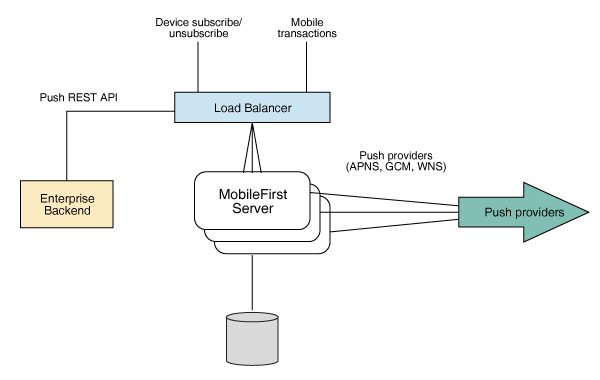For up-to-date product documentation, see the IBM MobileFirst Foundation Developer Center.
Push notification architecture
We can create an IBM MobileFirst™ Platform Foundation push notification architecture using the enterprise back-end calling method, in which an enterprise back end uses a IBM MobileFirst Platform Foundation adapter to deliver messages to a MobileFirst Server cluster.
This architecture relies on the enterprise back-end system to deliver messages to a MobileFirst Server cluster by calling push REST APIs.
Figure 1. Enterprise back-end push notification architecture

With this architecture, the flow is as follows:
- The request is routed to one of the MobileFirst Server instances, which sends a push message to a provider.
- In this flow, all MobileFirst Server instances can send push notifications, but for a specific request only one of the server instances performs the task.
- The enterprise back-end initiates calls to the load balancer.
The advantage of this method are that all MobileFirst Server can be used to send push notifications, so we can add more servers if we must send more messages per second. The disadvantage of this method is that every push message is a transaction on the MobileFirst Server. We can mitigate this overhead by sending a number of messages together or by having the IBM MobileFirst Platform Foundation adapter procedure that is invoked call the back-end for a batch of messages rather than single messages.
Parent topic: Push notification